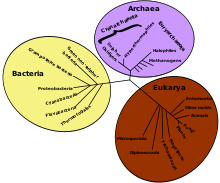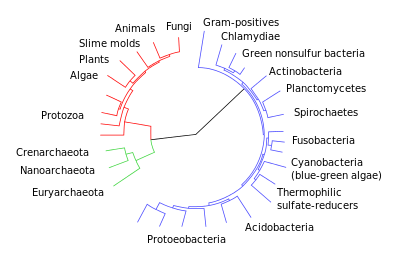Evolutionary ecology

Evolutionary ecology lies at the intersection of ecology and evolutionary biology. It approaches the study of ecology in a way that explicitly considers the evolutionary histories of species and the interactions between them. Conversely, it can be seen as an approach to the study of evolution that incorporates an understanding of the interactions between the species under consideration. The main subfields of evolutionary ecology are life history evolution, sociobiology (the evolution of social behavior), the evolution of interspecific relations (cooperation, predator–prey interactions, parasitism, mutualism) and the evolution of biodiversity and of communities.
Pristine, natural environments that have been relatively unaltered by humans are of particular importance in evolutionary ecology because they constitute the environments to which any particular organism has become adapted to over time.[1]
Evolutionary ecologists

- Charles Darwin, whose theory of natural selection is essential background to understanding evolutionary ecology and had explicitly include population dynamics;
- George Evelyn Hutchinson
- Robert MacArthur
- Eric Pianka
- Michael Rosenzweig
- David Lack
- R. A. Fisher whose 1930 fundamental theorem of natural selection recognised the power of rigorous application of the theory of natural selection to population biology.[2]
- Thierry Lodé [3]
Evolutionary models
| Part of a series on |
| Evolutionary biology |
|---|
 |
|
History of evolutionary theory |
|
Fields and applications
|
|
A large part of Evolutionary ecology is about utilising models and finding empirical data as proof. Examples include the Lack clutch size model devised by David Lack; the 1968 model on the specialization of species by Richard Levins; and Law & Diekmann's models on mutualisms.
See also
- Wikipedia:USEP/Courses/Behavioral Ecology (Joan Strassmann)
- [ Evolutionary Ecology (Thierry Lodé)]
Other references
- Fox, C.W., Roff, D.A. and Fairbairn, D.J. 2001. Evolutionary Ecology: Concepts and Case Studies. Oxford University Press.
- Mayhew, P.J. 2006. Discovering Evolutionary Ecology: Bringing Together Ecology and Evolution. Oxford University Press.
- Pianka, E.R. 2000. Evolutionary Ecology, 6th ed. Benjamin Cummings.
References
External links
- Evolutionary Ecology Research - a journal in the field.
- Methods in Ecology and Evolution - a journal in the field.
- Ecology and Evolution - Wiley
- Evolutionary Ecology - Springer